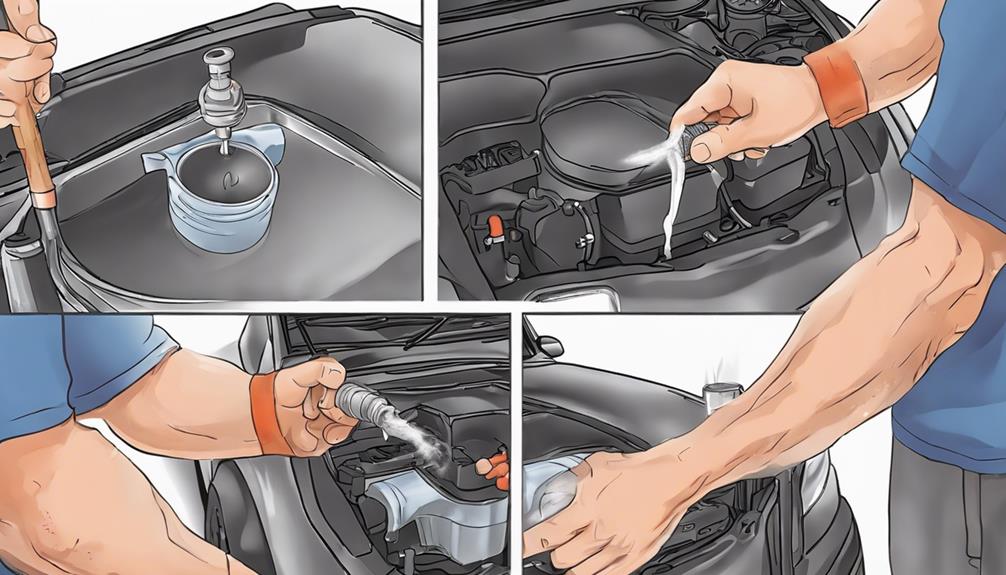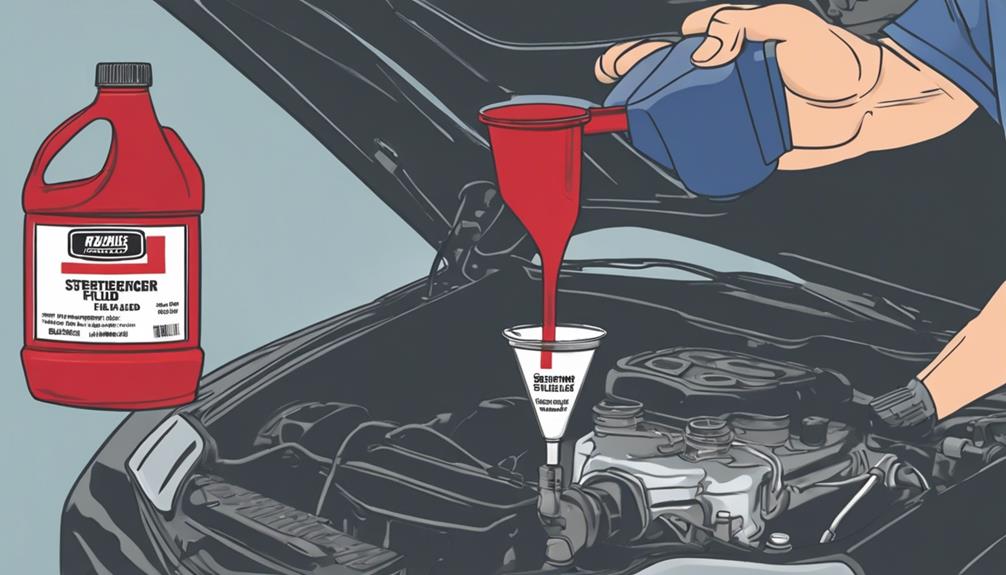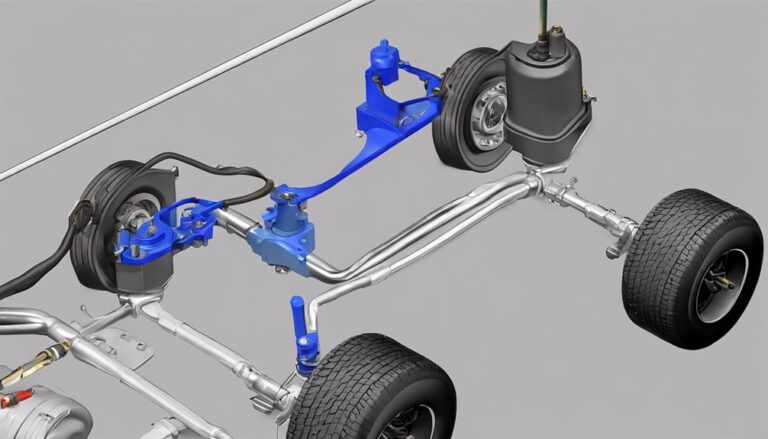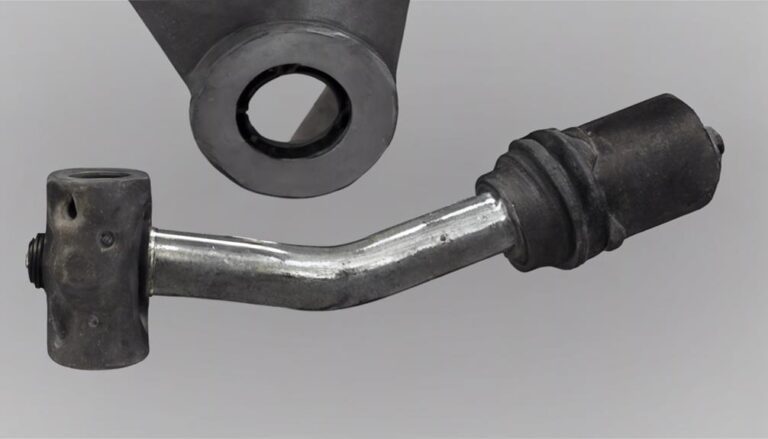Optimal Power Steering Fluid Replacement Practices
When it comes to maintaining your vehicle's optimal performance, one component often overlooked yet crucial is the power steering system. Imagine effortless turns versus struggling with each movement.
Now, consider the impact of neglected power steering fluid on these scenarios. Understanding the importance of timely fluid replacement practices can be the key to ensuring your steering system's longevity and functionality.
But what exactly constitutes optimal practices in this realm? Let's uncover the essential steps and factors that play a significant role in your power steering system's well-being.
Key Takeaways
- Regular power steering fluid changes prevent damage and prolong component lifespan.
- Signs like dark fluid, unusual noises signal the need for fluid replacement.
- Proper fluid flush involves draining, flushing, and refilling for optimal performance.
- Choose the correct fluid type to prevent damage and ensure system longevity.
Importance of Regular Power Steering Fluid Changes
Regularly changing your power steering fluid is crucial to prevent damage to steering components and maintain smooth operation. By adhering to a routine maintenance schedule for your power steering fluid, you can experience a multitude of benefits.
Firstly, this practice is cost-effective in the long run as it helps in prolonging the lifespan of your steering system components. Improved performance is another advantage that comes with regular fluid changes. Clean fluid ensures that your power steering system operates at its best, leading to enhanced responsiveness and efficiency.
Over time, old or contaminated fluid can cause issues such as noise during steering, difficulty turning the wheel, or even total system failure. Therefore, by investing in the simple task of changing your power steering fluid at recommended intervals, you not only save money on potential repairs but also ensure optimal steering performance for your vehicle.
Signs That Indicate Fluid Replacement
If you notice dark, burnt-smelling power steering fluid or particles in the reservoir, it may indicate contamination and the need for replacement. Additionally, checking the fluid color for brightness and consistency can help determine if a power steering fluid change is necessary. Another sign that your power steering fluid may need replacement is when you experience loose or stiff steering, along with slow steering response. Unusual noises emanating from the power steering pump could also suggest fluid issues and the requirement for replacement.
To help you better understand the signs that indicate power steering fluid replacement, the table below summarizes key indicators to look out for:
| Signs of Fluid Replacement | Description |
|---|---|
| Dark, burnt-smelling fluid or particles in reservoir | Contamination may be present and fluid replacement could be necessary. |
| Loose or stiff steering, slow response | Indicates potential low or degraded power steering fluid. |
| Unusual noises from pump | Suggests fluid issues and the need for replacement. |
Steps for Proper Fluid Flush

To properly flush the power steering fluid, begin by draining the old fluid from the reservoir to eliminate contaminants and debris. This step is crucial to ensure proper fluid circulation and system lubrication.
Next, disconnect the power steering hose to facilitate a complete flush of the system, allowing for thorough contaminant removal and maintaining optimal hydraulic pressure.
After draining the old fluid and disconnecting the hose, refill the reservoir with fresh power steering fluid. This new fluid will aid in system lubrication, ensuring smooth operation.
To distribute the fresh fluid throughout the system, turn the steering wheel back and forth. This action helps in achieving uniform lubrication and hydraulic pressure levels.
Regularly flushing the power steering fluid is essential to prevent issues such as noise, stiffness, and pump failure. By following these precise steps for a proper fluid flush, you can maintain the health and functionality of your power steering system effectively.
Choosing the Right Fluid Type
For optimal performance and longevity of your power steering system, ensure to select the correct power steering fluid type as recommended in your vehicle's owner's manual. The fluid compatibility is crucial for maintaining system health and efficiency. Common types include ATF (Automatic Transmission Fluid), CHF (Central Hydraulic Fluid), and specific manufacturer blends.
Using the wrong fluid type can lead to system damage and performance issues, so it's essential to adhere to the manufacturer's recommendations. If you're unsure about the correct fluid for your vehicle, consulting with a professional or dealership is advisable to prevent any potential problems.
Opting for high-quality, approved power steering fluid is paramount to ensure optimal system performance and longevity. By choosing the right fluid type, you can safeguard your power steering system, enhancing its overall performance and efficiency while avoiding costly repairs down the road.
Maintenance Tips for Longevity

Consider regular inspection of power steering fluid levels and quality as a fundamental practice for ensuring the longevity of your power steering system. By staying proactive with maintenance, you can prevent potential issues and extend the lifespan of your power steering system. Here are three key maintenance tips for longevity:
- Fluid Inspection: Regularly check the power steering fluid levels and condition to ensure they meet the manufacturer's specifications. Low fluid levels or contaminated fluid can lead to system malfunctions and wear.
- Leak Prevention: Address any signs of power steering fluid leaks immediately. Leaks can cause a drop in fluid levels, leading to increased wear on the system components and potential damage if left unattended.
- Fluid Flush Intervals: Adhere to the manufacturer's recommended fluid flush intervals. Flushing the system at the specified times helps remove contaminants and ensures the power steering fluid maintains its effectiveness, promoting the longevity of the system.
Frequently Asked Questions
How Should You Change Power Steering Fluid?
When changing power steering fluid, you can opt to flush or drain it. Whether you choose DIY or a mechanic, flushing involves steering while pouring new fluid. Draining may involve syphoning until clean. Be cautious with hoses to prevent issues.
How Often Should Power Steering Fluid Be Replaced?
You should replace power steering fluid every 30,000 to 60,000 miles. Neglecting this maintenance can lead to system damage and steering issues. Following recommended intervals ensures optimal performance. Remember, fluid degradation impacts your steering system.
Do You Have to Drain Power Steering Fluid Before Adding New?
When adding new power steering fluid, draining the old one is essential. It ensures fluid compatibility and system efficiency. Follow maintenance tips to prevent contamination and maintain smooth steering. Proper fluid replacement practices promote optimal power steering performance.
Does the Car Need to Be Running to Add Power Steering Fluid?
When adding power steering fluid, ensure the engine is off for safety. Checking fluid level and avoiding potential hazards is crucial. Consult your manual for guidance. It's best to be cautious and avoid complications by following proper methods.
Conclusion
In conclusion, regular power steering fluid changes every 30,000 miles are crucial for optimal system performance.
Did you know that 1 in 10 power steering system failures are due to lack of proper fluid maintenance?
By following the recommended steps for fluid replacement and using high-quality fluid, you can prevent costly repairs and ensure smooth steering operation.
Stay proactive with your power steering maintenance to avoid potential issues down the road.







